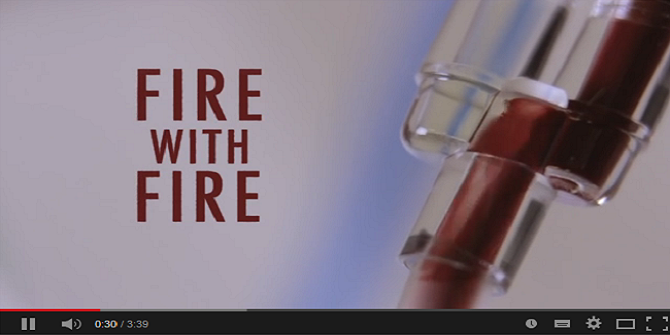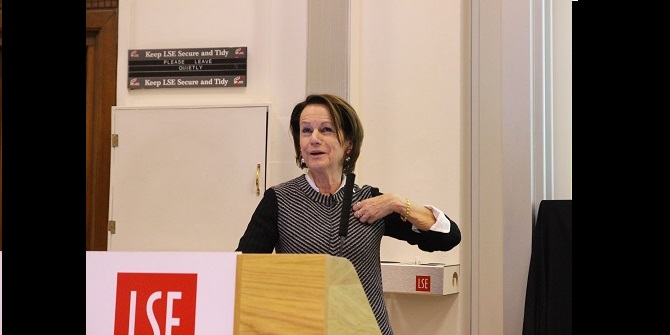The future of journalism has never been more unpredictable, but 21 aspiring or newly established young journalists from a wide range of countries recently tried to look ahead to “The European Media Landscape in 2030” over four weeks of digital seminars. LSE Media and Communications MSc graduate Maya Kokerov reports on the M100 YEJ Workshops, part of the Sanssouci Colloquium.
It’s clear that digitalisation is becoming the main technological trend for our social and cultural life. Beyond mere entertainment, we need to rely on the freedom of the internet to mobilise important economic, political and social discourses.
The Zoom format of the seminars demonstrated how culturally interconnected media professionals and consumers have become, especially leading up to the culmination of the exciting M100 Sanssouci Colloquium (which played host to about 100 influential media experts).
Thilo Kunzemann, Press Officer of the European Parliament in Berlin, argued that private companies should not be tasked with the enforcement of rights and that it’s the job of the EU to set the rules – we shouldn’t leave this solely up to tech giants like Facebook and the ‘Big Five’. It was refreshing to be joined by a range of Western and Eastern representatives. The second day was brought to us courtesy of two independent Russian organisations interested in free speech and human rights. Pavel Andreev from 7×7 and Kirill Artemenko from paperpaper.ru, who introduced a number of media income streams to help finance journalistic projects. I’ve never taken any business courses so the introduction to native advertising and crowdfunding as sustainable business models was especially useful in explaining how to tailor and segment funding while also diversifying media outlets.

Creating Innovative Communities
If you’re a young journalist like myself, who’s attempting to write for a living while trying to afford things (easier said than done), the ‘Business’ workshop may be the most practically relevant of them all. However, we also learned a lot about creating innovative communities through podcasting and newsletters thanks to Ken Sweeney from Europa United and Simon Hurtz, co-founder of Social Media Watchblog.
As a social science student, it was unsurprising that my personal favourite workshop was ‘Society’ with Sheila Mysorekar from Neue Deutsche Medienmacher*innen. Building on the theory I learned during my masters at LSE, this workshop helped me further reflect on how culturally-coded narratives informed by stereotypes are normative parts of the news cycle, which appear in a certain way when it is convenient for reporters. Sheila’s talk pointed to the ‘us versus them’ rhetoric deployed by many European media outlets that absolutely other minority groups through criminalisation and sensationalism, especially in regard to the refugee crisis.
It was interesting to work in groups with other young journalists who, scattered all over Europe, had different insights on the treatment of minority groups in their home countries. In Ukraine, for example, Black Lives Matter protests went virtually unreported. In Italy and Eastern European countries such as Bulgaria, Roma people were the largest minority that was often depicted as lazy or ‘choosing’ to live in the confines of their communities.
Diverse Journalism
The talk shed light on the importance of representation and intercultural capacity building in newsrooms. Diverse journalism is not only integral to avoid the harm of racist framing but it’s also better journalism because stereotypes prevent us from seeing how society really is. As a result, discriminatory media renders us unable to act ethically, politically and culturally.
Most recently, this journalistic bias could be seen in news reports linking Black Lives Matter protests to an increase in coronavirus cases. The racialised tone of this coverage, however, was not applied to reports on the crowded UK beaches which made front covers the prior weekend. Even as COVID19 led to a new mode of conducting journalism through digitalised forms, the Black Lives Matter movement became inextricably entwined with the pandemic and it became apparent that we must diversify multimedia journalism and the people who can access it. We concluded that, to tackle this glaring issue, the next ten years require anti-racist training for journalists, more diverse newsrooms and better representation of visible minorities on screen.
In our Scenario Workshops, we worked with Foresight Intelligence to systematically think about the uncertain media future in the long-term. We drew implications by imagining possible futures in a structured way and reflecting on what this would mean for the media landscape.
Possible Futures
Our brains are wired to think short-term and our tendency for cognitive biases such as lenient retrospection (hindsight bias like “I knew it all along”) makes us see events as more predictable than they are. In contrast to forecasting, we did not think about probable futures but rather created scenarios of plausible and possible futures through foresight methodology such as Scoping, Environment Scanning and Factor Assessment.
From our surveyed list of 70 influential factors (political, economic, social, legal and environmental) which could affect the future of Europe’s media landscape in 2030, we selected key uncertainties to construct the scenarios through possible projections that were mutually exclusive and collectively exhaustive (MECE).
After creating four possible projections, we narrowed it down to two: one positive scenario where the progressives ‘dominate’ and one negative scenario where populists and nationalists come into nightmarish power – a smorgasbord of low regulation and violence straight from an Orwell dystopia.
Although we tend to think of society through a pessimistic bias, it was important to avoid cultural pessimism and invest energy collectively in the positive scenario while learning what could go wrong from the negative scenarios (as well as how to fix it).
Positive Scenario
In the positive scenario, data and privacy regulation were deemed highly important to increase media trust. This led to the possible taxation of tech giants and the notion that European unity can lead to digital change through digital sovereignty. Media literacy was also clearly an important component of education so that students can learn to fact-check misinformation (a possible by-product of COVID19). We concluded on the ultimate need to combine legislation and education in order to ensure greater user control and more collaboration with local journalism.
The two ten-year scenarios we created were used as a starting point for discussion at the M100 Sanssouci Colloquium, which looked ahead to how the pandemic is changing our economies, our societies, our pluralistic media landscapes and the future of democracy itself. Critical engagement, transparency and mutual cooperation were hailed as vital tools needed to wield and convey the value of journalism in the next decade. Audiences must trust and actively engage in the digital society in order to move beyond “social media platforms filled with screenshots from other platforms” to a much more diverse web, as Cory Doctorow eloquently put it.
In our scenario workshops, the positive media vision we were left with was the possibility for the emergence of new media formats. As journalistic politics, business and innovation have become problematised by the pandemic, we must ask ourselves: how can we sustain trust to create loyal customers without simply hoping to eradicate tech giants through regulation?
Whether a turn to new media formats can occur naturally or through editorial guidelines, journalism must adapt to multicultural audiences who will be drawn in by more personal, collaborative storytelling.
Important Grassroots
We must look beyond the national level at the way that diverse local journalism strengthens communities and civil society by covering regional issues which media giants are not interested in. This is important for grassroots organisations as well as connecting people on a more personal level by giving them a voice to cover their needs.
A new era of social and news media would mean more diverse, high quality and community-based journalism which takes attention away from tech giants. This also includes investigative reporting that confronts corruption and fuels debate, as exemplified in cases such as the #MeToo movement.
A greater proliferation of media by 2030 could lead to new forms of publications and news outlets, from community journalism that survives through membership donations to social media style organisations which target young people and utilise multimedia formats. In this ideal scenario, rather than going to one source (such as traditional or social media), multiple sources could come to users directly through personally delivered journalism like newsletters. Ideally, the way audiences consume media would change.
Smart Features
In this possible future, online platforms could also help media producers create an immersive experience for users. Journalism could become further integrated with new technology such as artificial intelligence (AI), augmented reality (AR) and other smart features.
As of 2020, every 60 seconds there are 350 million tweets, 54 million Whatsapp messages, 16,000 TikTok views and 500 hours of YouTube footage uploaded to the internet. In this digitalised war on attention, this kind of innovation is necessary to move away from the monopoly of tech giants and for journalism to be able to compete. A lot of people today turn to Twitter and Facebook to get their news in convenient, bite-sized character limits. However, by 2030 there’s hope that all this could change – for the better.
From the remote corners of our bedrooms and living rooms, a small group of young journalists were able to come together to identify the challenges and opportunities of the changing media landscape. With millennials and Gen Z finding innovative ways to both network and use their voices amidst this COVID-era of media, and the political tornado it’s riding, there’s hope that the next generation of journalists will be able to help bring about the positive scenario we so optimistically pieced together.
This article by LSE Media and Communications MSc graduate Maya Kokerov.
The views are those of the author and do not necessarily represent those of Polis or the LSE.






